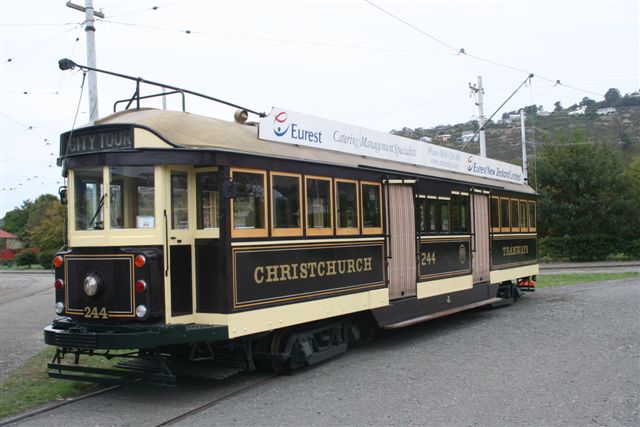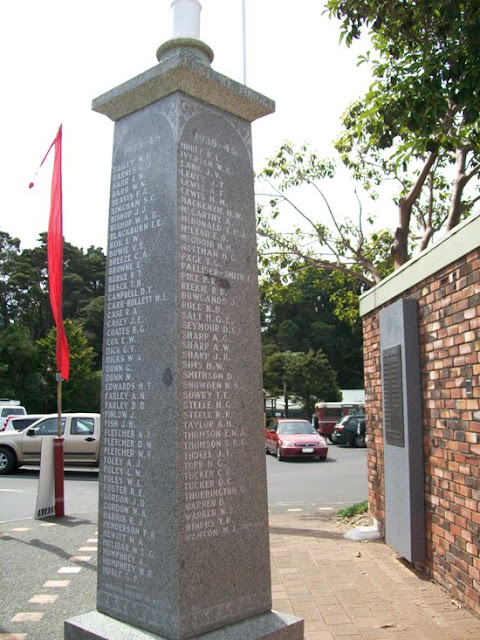In 1905 and 1906, court case reports appeared in both Australia and New Zealand newspapers during what appeared to be a rash of incidents involving shopkeepers and their display, in their front windows, of “indecent” postcards. I found the following two reports by chance.
From the NZ Herald, 4 September 1906.
At the Police Court yesterday, before Mr C C Kettle, SM, Joshua Connolly [of Queen Street] was charged on four informations with selling indecent postcards, entitled, “It’s a Shame to take the Money”, and “Please help the Blind”. Sergeant Hendry conducted the prosecution, but the defendant was not represented by counsel.
Sergeant Murphy said that, in company with another police officer, he went to defendant’s shop and purchased the cards.
As the sale of the cards was admitted, Mr Kettle said the question was whether the cards were indecent.
Sergeant Hendry said the police had received complaints from the ladies of the YWCA, who had been very shocked and scandalised by the exhibition of the cards in the defendant’s window. Prosecutions had taken place in various provinces of the colony, and the remarks of the magistrates had been widely published in the press, so defendant must have noticed them.
Defendant said the cards were not indecent.
Mr Kettle: Could you get respectable women to come forward and say they are not indecent?
The defendant said he had them in his window for six months.
Mr Kettle: Of course, they are very mild to some of the cards you see about. Do you mean to tell me that any respectable woman would stand in the street in that position?
The Defendant: Oh, yes. You can see them like that every wet day. I would be very sorry to have the cards in my window if they were indecent.
Sergeant Hendry: These postcards are sold at 3d. There must be something spicy about them.
Mr Kettle: There must be an enormous profit. (To defendant) Where are the cards printed?
Defendant: I get them from Melbourne.
Mr Kettle reserved his decision, pending the hearing of charges against Barney Barripp.
Barney Barripp, for whom Mr Singer appeared, was charged on 12 informations with selling indecent postcards, entitled “After Dark,”, “An Australian Native Bare”, “Psyche”, “Reflections,” “The Early Bird Catches the Worm,” and “A Ballet Dancer.”
Constable Maher said he went to defendant’s shop and purchased some cards. He then asked defendant if he had any others, and defendant said, “Do you like suggestive ones?” He then purchased some.
Mr Singer (to witness): I suppose it was with hesitating mien and blushing face that you went into the shop?
Mr Kettle: Oh, don’t waste my time; get to business.
Mr Singer (to witness): Have you ever kissed a girl?
Witness: That is my business.
Do you consider it would be indecent?
No; it all depends on the circumstances.
Well, what indecent suggestion do you get from “After Dark”?
I would not like to say in open Court.
Mr Singer submitted that “Psyche” was a reproduction of a painting by one of the world’s most famous artists. Pictures by the best artists in New York, Paris and London were reproduced, and gave one an artistic education, and this ought to be encouraged. The cards were educative in an artistic way.
Mr Kettle: Yes, in their proper places.
Mr Singer contended that if the cards were indecent the statues in the Albert Park and the Museum were indecent. Postcards were the cheapest form of art education.
Mr Kettle: I question that you have to pay 3d each for them.
In referring to the “Ballet Dancer,” Mr Singer said it was seen at the theatre every week, and no one called it indecent. “Does Your Worship say the ‘Australian Native Bare’ is indecent?” and with regard to ‘The Early Bird’ the defendant does not remember selling it. In conclusion, Mr Singer drew His Worship’s attention to the fact that there had been no warning and no convictions against Barripp.
Mr Kettle said he was glad the police were taking steps to put this nuisance down. Shops were full of these cards. Connolly’s cards came well within the meaning of the Act, and as he had been convicted of similar offences he would fine him £5 of each of two charges. For the first offence the maximum penalty was £5 or three months, and for and subsequent convictions £10 or six months.
With regard to Barripp, Mr Singer had wisely left along “The Early Bird” card, which was most disgusting. “After Dark” and “The Early Bird” were both indecent, and the defendant would be fined £2 10s on each of the two charges. With regard to the other cards he would reserve his decision.
The question of costs was reserved till Mr Kettle gave his decision on the other cards.
Leave to appeal against the decision on the “After Dark” card was given [by] Mr Singer.
Mr Kettle said, in conclusion, that this was an offence which required to be put down by a firm hand. It was no use fiddling with it.
From the NZ Herald, 6 September 1906
At the Police Court yesterday Mr C C Kettle, SM, delivered his reserved judgement in the cases in which Barney Barripp, shopkeeper, was charged with selling indecent postcards.
In the course of his decision His Worship said that persons exhibiting or selling any picture or printed matter of an indecent, immoral or obscene nature, or which the Court was satisfied was intended to have an indecent, obscene, or immoral effect were liable, under the Offensive Publications Act, 1892, and the amending Act, to fine or imprisonment as therein mentioned. He had no hesitation in holding that the postcards “Reflections”, “Psyche” and “A ‘Bally’ Dancer” were clearly libidinous, and were calculated to have a pernicious influence, especially on the minds of boys and girls into whose hands they might fall. It was the duty of the Court to give full effect to the intention of the Legislature.
Convictions were recorded, and nominal fines of 5s imposed in each case. As the defendant had already been fined £5 and costs in respect of two other indecent cards sold by him. Mr Kettle intimated that if the exhibition and sale of such cards were continued, it might, perhaps, become necessary to impose heavier fines, or imprisonment.
Mr Singer reminded His Worship that he had given no decision on the “Australian Native Bare.”
Mr Kettle said that card was almost as bad as the others, and it was intended to have an indecent effect. On that information he would record a conviction also.
Mr Kettle allowed costs, £2 17s, in connection with the case.
Thanks to the NZ Truth, we have some idea of what these naughty cards were actually about.
"It's a shame to take the money."
It represented a small shoeblack attending to a swell tart's tootsie coverings ; her skirt and lingerie were drawn up to her knees and opening up a vast panorama, of naughtiness. Apparently that wicked shoeblack having gazed to his fill is supposed to ejaculate "It's a shame to take the money."
"Please help the "blind.”
This showed an individual labelled "blind" gazing in raptures on a lady attending her garter.
NZ Truth 8 September 1906
"An Australian Native Bare."
This is a pun on the words "native bear," and is absolutely nothing more offensive than a black blur in the shape of a human form, one hand of which is holding an iguana by the tail. It is ridiculous, pathetic, maddening to think that people can be found filthy-minded enough to see anything indecent or immoral in it, and a magistrate mad and old womanish enough to convict upon it. As well prosecute the man who sells and the mother who gives to her child one of those little undressed rubber dolls! There is no shading, no outline other than the curves of the black human-shaped blot.
"A Bally Dancer."
This is a crazy delineation in black and white of a ballet, dancer, high kicking. Only the two legs to the knee are visible out of a cloud of muslin lingerie, just as can be seen in flesh and blood any night on any stage, anywhere in the civilised world. Both these are from the pencil of that true artist and brilliant “black and white" man Souter, of Sydney, and have not a scintilla of evil suggestion about them that even the most debased mind could detect.
“Psyche”
A photograph copy of Psyche about to descend into the stream. This is pure art and carries no suggestion, except to the mentally diseased on sexual subjects. And magistrate Kettle convicted on these three examples. God help a country whose magistracy contains such men with such minds.
NZ Truth 13 October 1906
"After Dark", it seems, was just too terrible to describe.
The Truth, no fan of the police or of "wowsers", made the editor's feelings klnown about all this.
The subject of this tyranny of the few over the many is a wide one; it does not begin and end in an indecent prosecution on a false charge of indecency.
That the police took action is not a matter for discussion. The average policeman, if he thought he could get a conviction to his credit, would prosecute his mother for wearing her boot heels over. Nobody believes that any sane policeman really considered the three pictures described are "indecent or immoral." The thing would be too ridiculous! No, the police were set on by a gang of crawling creatures who make a good thing out of the people under the pretence of piloting them to a Heaven that, if they are to be there too, no reasonable man wants to get to. No sooner did one weevilly wowser start the "good work" in one city than all his bitterly envious prototypes rushed to win fame similarly in their separate places of sojourn, and the police were forced into taking action or risk the snarling slanders of these atrocious beings, very few of whose lives will bear strict scrutiny, if the whole truth was known.
It is to be hoped that Magistrate Kettle, having become sane again, will stay so and that his only possible action— if we are not to be the butt of the whole world— in dismissing these idiotic "Psyche" charges, will bear fruit, and that it is the forerunner of other protests against the aggressive insolence of the pious, prurient-minded, pragmatical prigs who would fain rule us with a rod of iron and persecute us in the name of Christ.
NZ Truth 13 October 1906
































